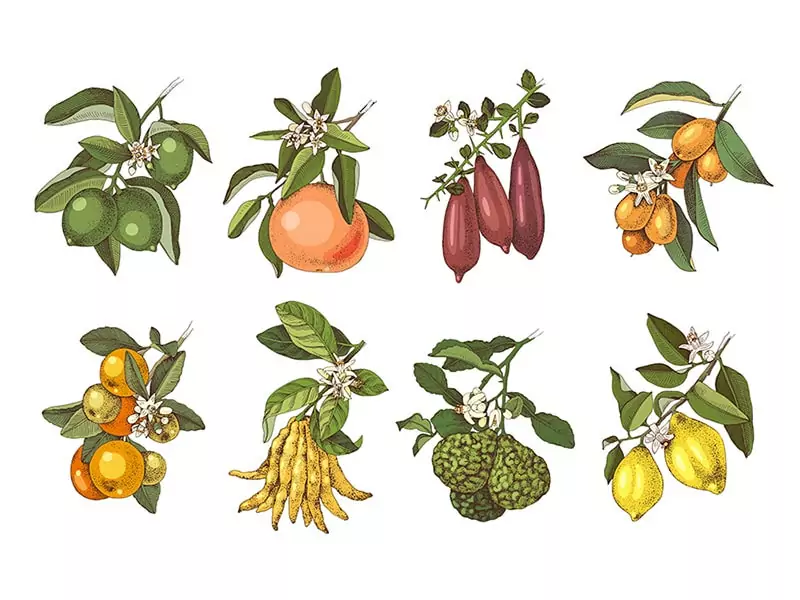
If you are searching for types of citrus fruits with pictures and names, then you have reached the right place! Here is the complete list of citrus that is only for you! You may be surprised that there are a lot more types of citrus fruits that you have not known about!
It is never too late to learn about these amazing foods with their names’ starting letters ranging from a to z, especially when you are a cooking lover! You should know that these citrus fruits applications are really useful to enhance your dishes and a lot of other things!
So what are you waiting for? Let’s get to the article now!
What Are Considered Citrus Fruits?
Citrus fruit refers to the category of fruit that has a thick or thin rind outside with the flesh divided into segments full of juice. Citrus fruits often consist of sweet, bitter, and sour flavors. These flavor profiles will vary between different types of fruits.
The citrus genus originates from East Asia, South Asia, Southeast Asia, Australia, and Melanesia. Citrus fruits vary in thousands of sizes and shapes. Many citrus fruits belong to the fruit group that is not round and beautiful like you’ve ever imagined! They can be ugly and bumpy.
It’s easy to identify a citrus fruit by looking at the botanical name of that fruit. Any citrus fruit type will have the “citrus” word in its name! Some of the most famous examples are Oranges, Lemons, Limes, and Grapefruits.
You can grow many citrus varieties in your garden!
Three Primary Types Of Citrus Fruits
Do you know that there is a trio of natural varieties of citrus fruits that are not a combination of any other types? Let’s learn more about these fantastic original fruits!
1. Pomelo
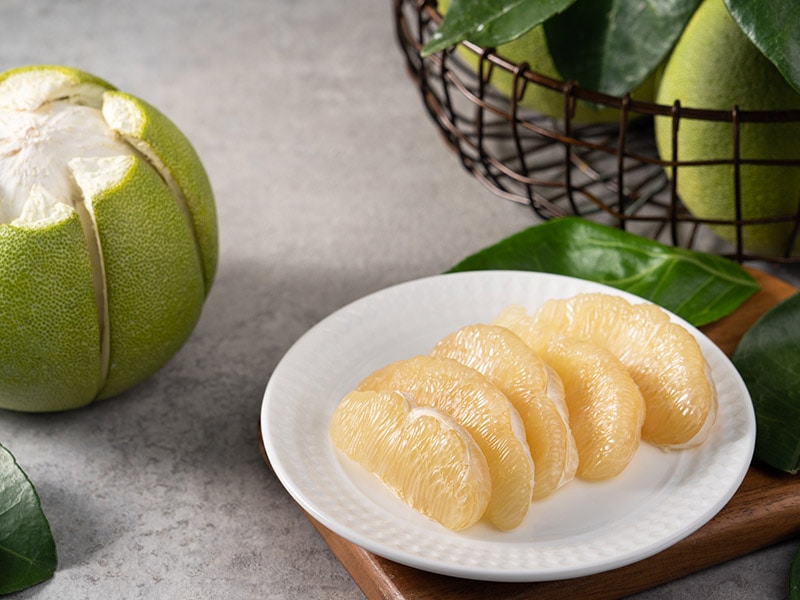
Pomelo has a wide variation of names like Pummelo, Jabong, Shaddock, or Pamplemousse based on its regions. It is a superstar in Asian countries! Its flesh has many different colors according to the local areas and its conditions.
Pomelo is large, round, or oval and has a green to yellow color with rough skin. The white-fleshed and most common Pomelo version is juicy and sweet, while the pink-fleshed pomelo is a bit sour and less juicy.
Pomelo is native to Southeast Asia regions, and here they dip its flesh into a mixture of salt to eat directly, like in Sri Lanka, but the mixture is replaced with sugar. People also use the rind of Pomelo to make sweet treats, such as marmalade or a sweet conserve in Brazil.
Sometimes, the Pomelo rind is dipped in chocolate or thrown in a hot bathtub for a fragrance bath. In the Philippines, they make a pinkish drink with Pomelo juice and pineapple extract.
2. Mandarin
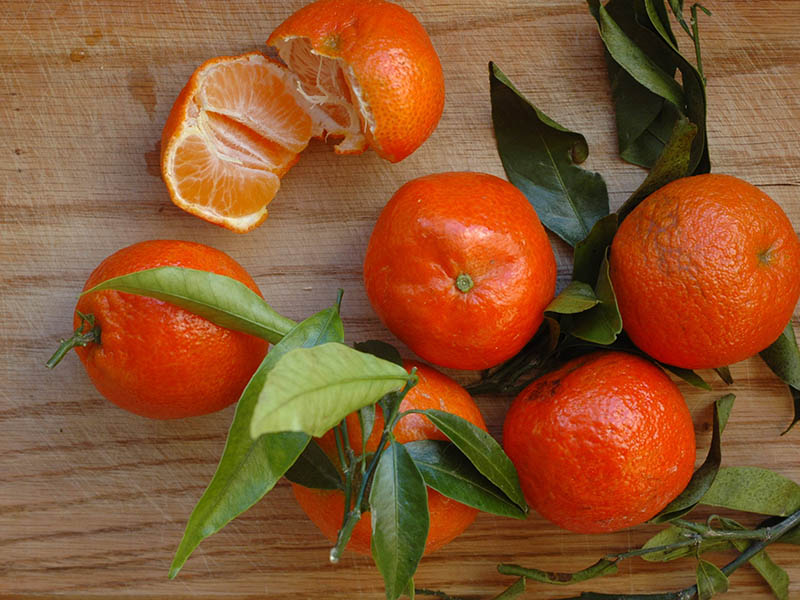
Mandarin, or Mandarin orange, is the second type of fruit that belongs to the Citrus genus. Its skin is so loose and thin that you can easily peel and split its flesh into segments. Its smooth, shiny rind bathes in bright to dark orange. It is in an oblate shape.
Mandarin has a low acidic content. It tastes sweeter than standard orange and refreshing that you can eat it whole or drink its juice directly. It consists of an intense citrus, floral and pleasant aroma.
In China, Mandarin is a typical present type of Chinese to give to their beloved ones on New Year’s Eve since they believe that Mandarin is representative of hope and good luck. Also, dried Mandarin zest can be a great cure for many diseases in Chinese medicine.
Here are some cooking methods for you to make use of Mandarins!
3. Citron
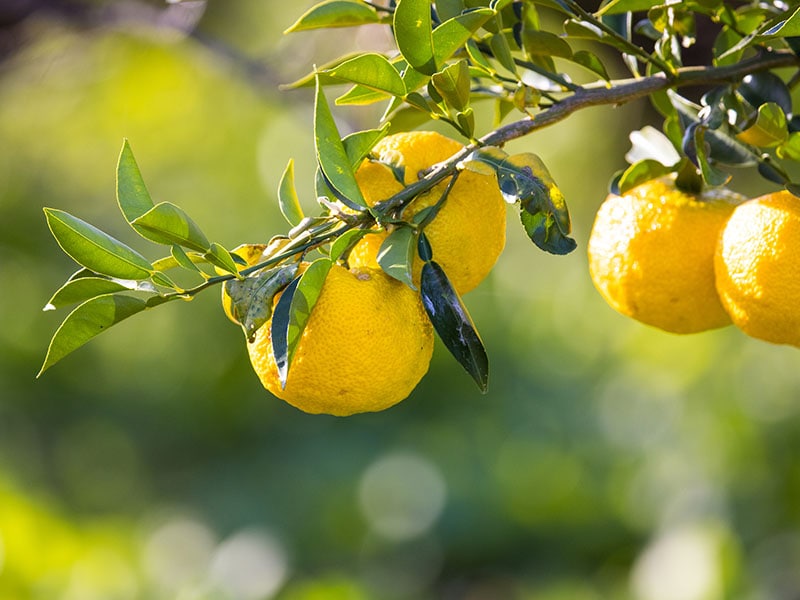
Citron is one of the most typical citrus types that is usually used for medicinal purposes such as treating skin disease, nausea, hemorrhoids, etc. Citron is very popular in Asian cuisines. It consists of a yellowish to bright lemon yellow shade outside.
Citron has mostly skin and little flesh. When it is ripe, you will smell a lemony, citrusy aroma from it. It has a slightly crunchy texture and tastes a little bit bitter or sour.
People usually use the inner rind of Citron to candy in sugar and make succade, a popularly exported product that is quite important in international trade. Citron outer zest and scent are also favorite elements of this fruit that people love to utilize!
24 Amazing Hybrids Of Citrus Fruits That You May Miss
Besides the three main types, the citrus family also includes a lot of hybrids from all over the world! These are the result of a long research process conducted by the scientists. You may find both familiar and strange fruits on this list! Let’s start!
4. Lemon

Yes, I know some people are still concerned about whether lemon belongs to the fruit or vegetable category, but it is indeed a well-known fruit worldwide! It has a signature bright yellow and shiny, smooth skin that looks gorgeous from the outside!
You may want to drink lemon juice or use it to brighten your dishes and maybe other beverages! Find the best squeezers to get fresh lemon juice from your lemons! Also, use its zest and make use of everything you get in hand!
You can definitely use some lemons for household cleaning!
5. Standard Orange
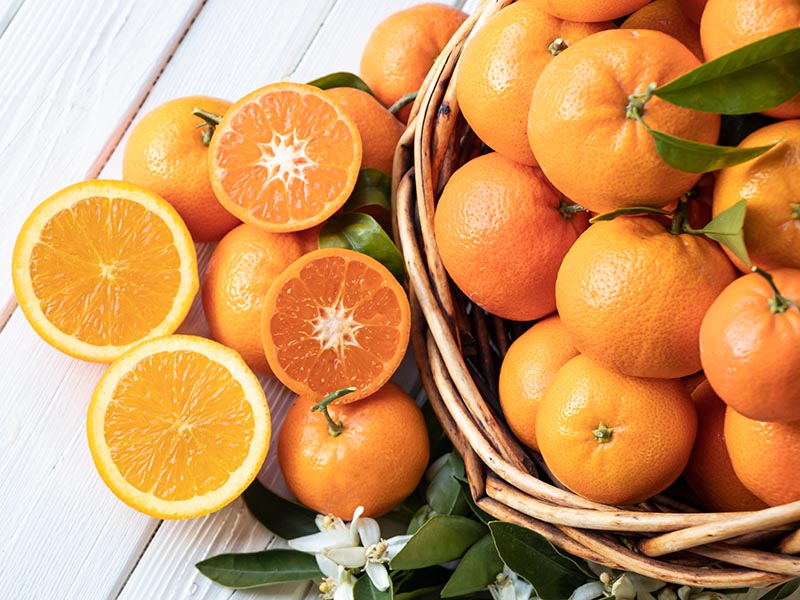
The second most worldwide popular citrus fruit can be oranges! You’ll be surprised to know that orange is actually a cross between a Mandarin and a Pomelo. It tastes tangy, both sweet and sour. It has very smooth and shiny skin.
Make some dessert dishes with orange utilizing every part of it, and you’ll fall in love with them! Its name has even become a famous color that is used every day! How cool is that? Everyone around the world has a craving for oranges!
6. Tangerine
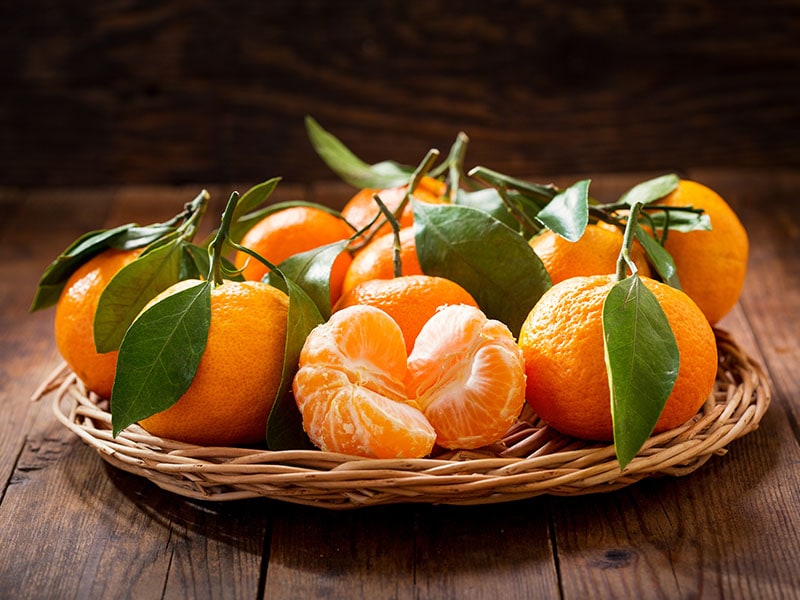
Tangerine is another favorite citrus fruit of everyone on earth! This delicious orange fruit has a sweeter, stronger taste and a less rounded shape than those of ordinary oranges! Therefore, the juice is widely used in desserts, salad dressings, and many other dishes.
You can peel the loose rind of this tasty fruit that begins with “T” and eat its flesh directly. Its skin can be made into a delectable dessert when coated with some chocolate. You can find this dish in many restaurants and dessert bars.
7. Amanatsu (Sweet Orange)
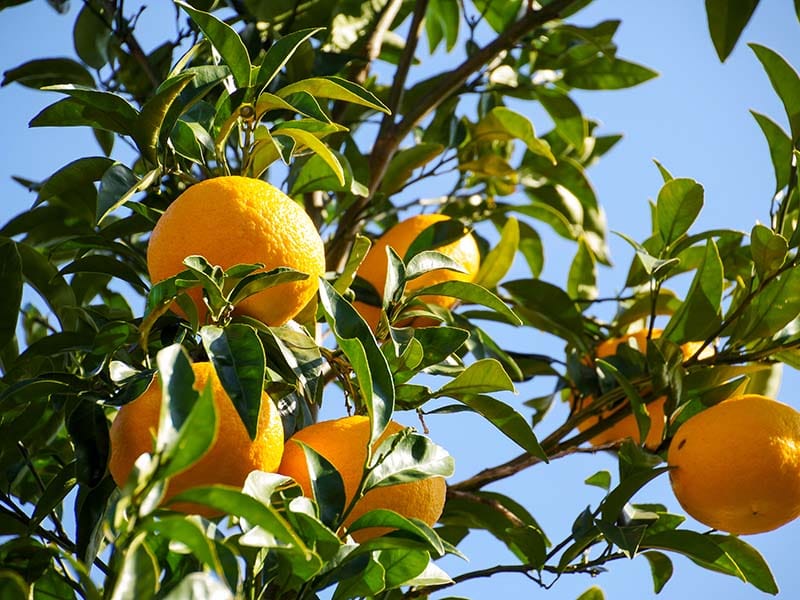
The name “Amanatsu” comes from Japanese, which means “sweet summer.” As its name suggests, this is a variety of orange that consists of sweet juice and flesh with a yellowish shade. It is the size of grapefruit and in a spherical shape.
Amanatsu juice and flesh can appear in many dessert dishes of Japan, marmalade, alcoholic drinks, or even ice cream, too! Enjoy the Japanese cuisine with this spectacular Sweet Orange!
8. Lime
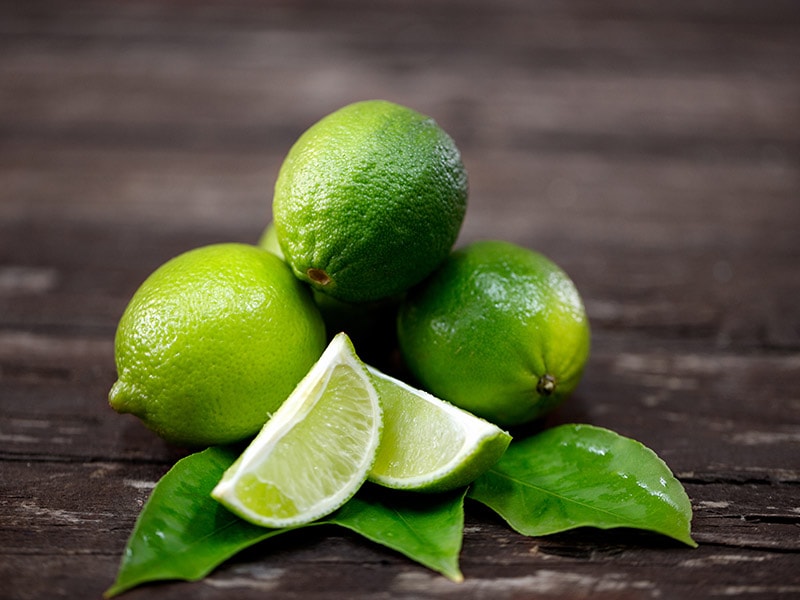
This small fruit may remind you of lemon at first sight, but it has many more exciting characteristics than that! It is acidic and aromatic. Lime is famous worldwide, and it is primarily used in Asian cuisines like Vietnamese foods or Cambodian foods.
There are thousands of species of limes that you may not know about! Some of the most popular types are Key Lime, Kaffir Lime, and Desert Lime. Both sweetened and unsweetened varieties of Lime juice are commonly consumed in bottles.
You can find Lime juice in many types of cocktails and liquors, such as gin and tonic, margaritas, Daiquiri (rum cocktail), and other tropical drinks. Lime tastes much more robust than lemon, but lemon juice can sometimes stand in for limeade in those beverages.
9. Buddha’s Hand

Buddha’s Hand is a unique fruit that has the shape of a finger-like figure. It actually has no pulp or juice inside. Still, for its impressive appearance, it is used for ornamental purposes as a symbol of longevity and luck, offering on Chinese New Year’s celebration.
The zest of Buddha’s Hand is also a great citrus-related item in dishes and making alcoholic drinks.
How about a taste test for the special fruit called Buddha’s Hand?
10. Kaffir Lime
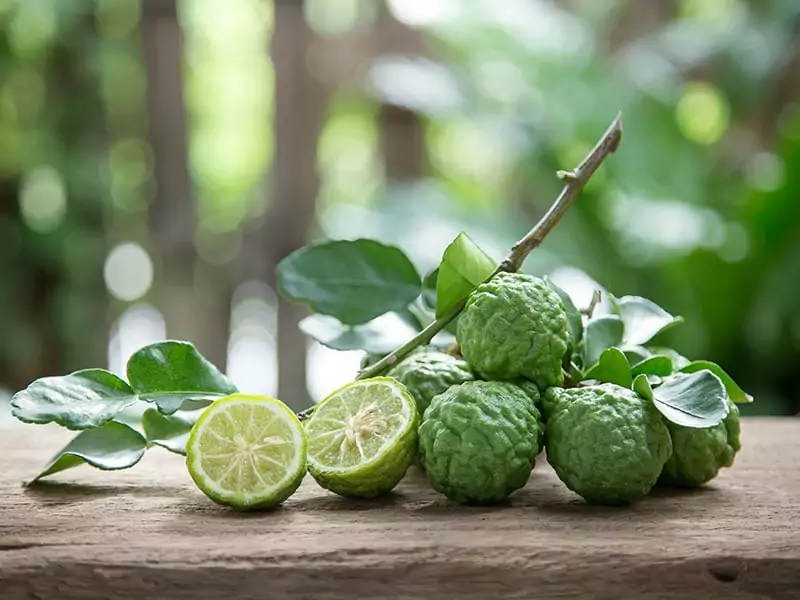
Kaffir Lime has a signature bumpy green skin. Asians likely use the leaves more than the fruit. You may find it in Cambodian, Thai, Indonesian and Vietnamese dishes. Kaffir includes a strong citrus taste that can overpower mild herbs.
11. Tangelo
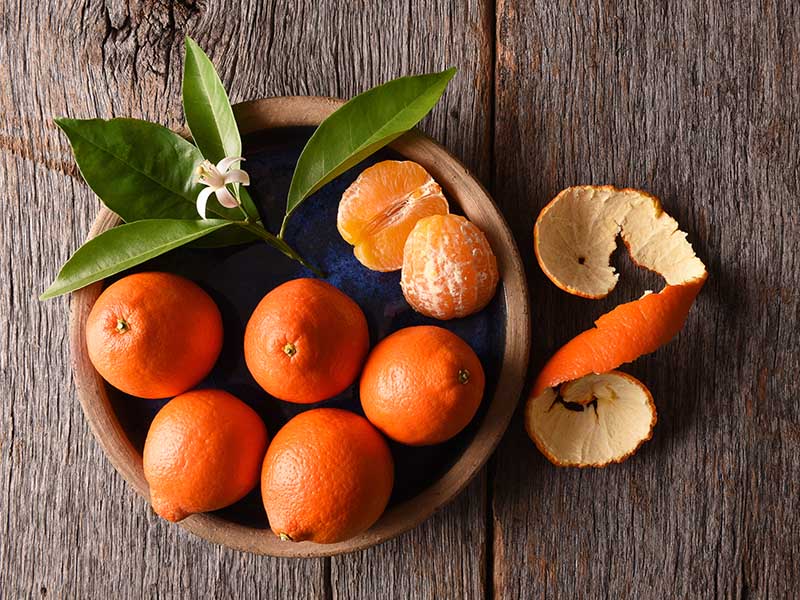
Tangelo is a combination of a Tangerine and a Grapefruit or Pomelo. The sweet and tangy tangelo juice is usually used to replace many other common citrus juices like mandarin orange or sweet orange.
Tangelo is super juicy with a bitter undertone and gorgeous with shiny orange skin. You can easily recognize Tangelo by observing the distinctive knob on its stem. It also consists of a loose rind that you can peel off in one second and eat the flesh directly.
12. Yuzu
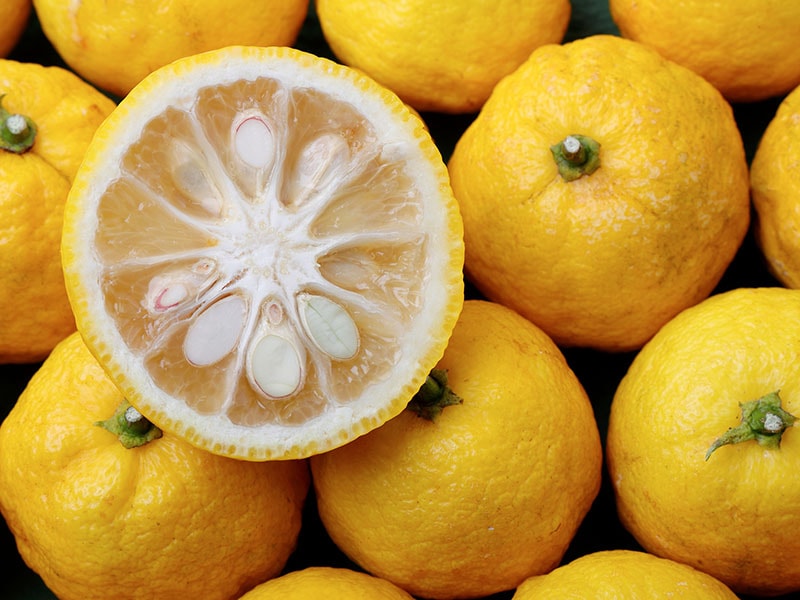
Yuzu is a really aromatic citrus fruit that is actually not consumed as a fruit. People usually use its juice to make ponzu sauce, tea, and alcoholic drinks. Yuzu comes from Japan.
Yuzu looks and tastes much like grapefruit, but the zest is more aromatic than grapefruit. Its outer skin is also bumpier and dives in yellow more than orange.
13. Calamondin
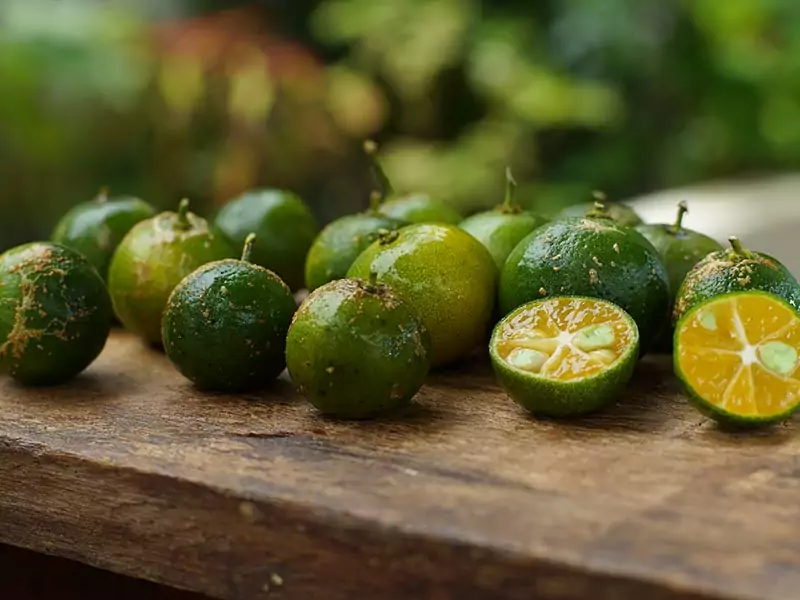
Calamondin is a mixture between Kumquat and Mandarin Orange. Its juice tastes so acidic that it is uncommonly consumed by itself, just like lemon. But Asians use this juice a lot in seasoning and making dipping sauces for their dishes. You can also make it into jam.
14. Kinnow
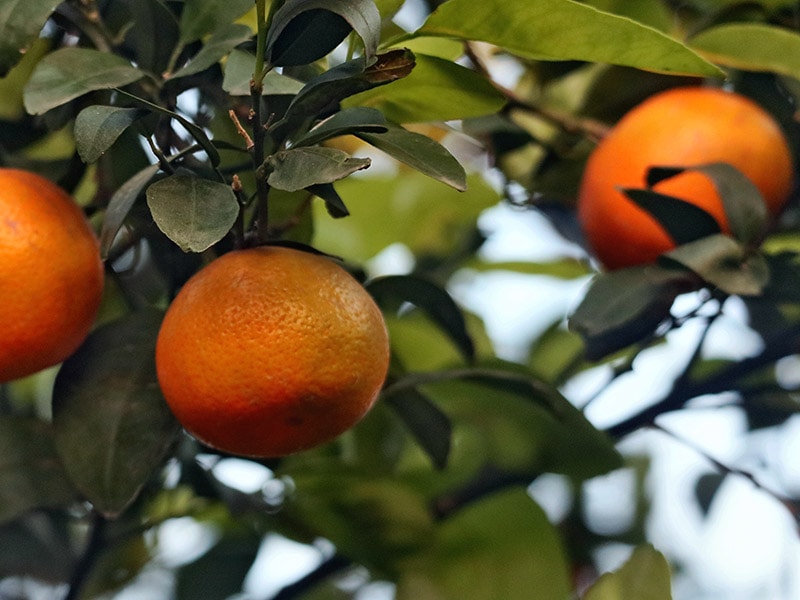
Kinnow is a type of Mandarin Orange, but its rind is more complex to peel than the standard version. However, Kinnow is actually sweeter and juicier than other varieties. This fruit consists of a high-seed content, and only appears in Pakistan.
15. Chinotto
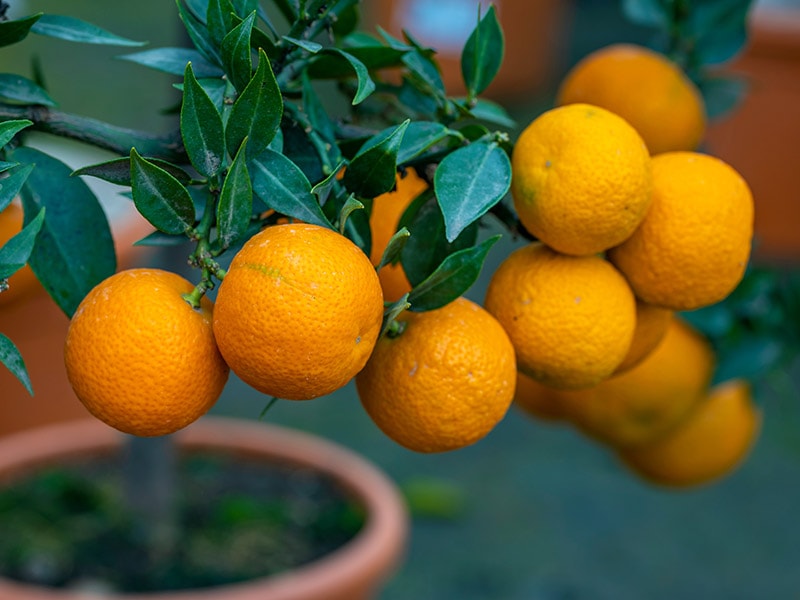
Chinotto has a signature bitter flavor that is usually used to flavor and make alcoholic drinks. There’s even a dark-colored drink named after this fruit and made completely from its juice.
Chinotto has a beautiful yellow-orange color and small dots on the rind. In Italy, it is a common and important flavoring element in Italian Amari or Campari apéritif.
16. Kabosu
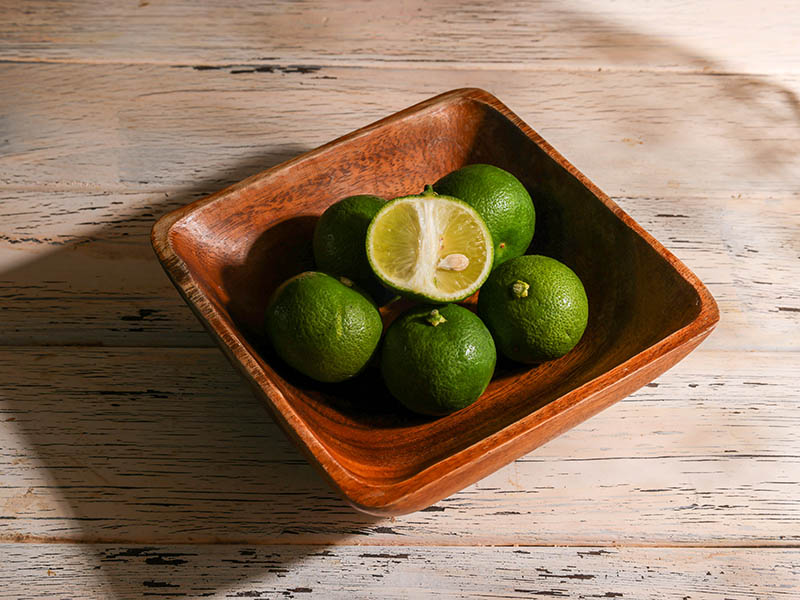
Kabosu is another member of the Citrus family from the land of the rising sun that looks really like a lime. It is actually more related to Yuzus and Bitter Oranges. This unique fruit starting with the letter “K” is not very popular since it is only grown in the rural areas of Japan!
Kabosu has a unique sour flavor applied a lot in Japanese cuisine, especially as a vinegar replacement. They will also add Kabosu juice in grilled fish, sashimi, ponzu in hot pot, condiments, wagashi, alcoholic drinks, etc.
17. Grapefruit
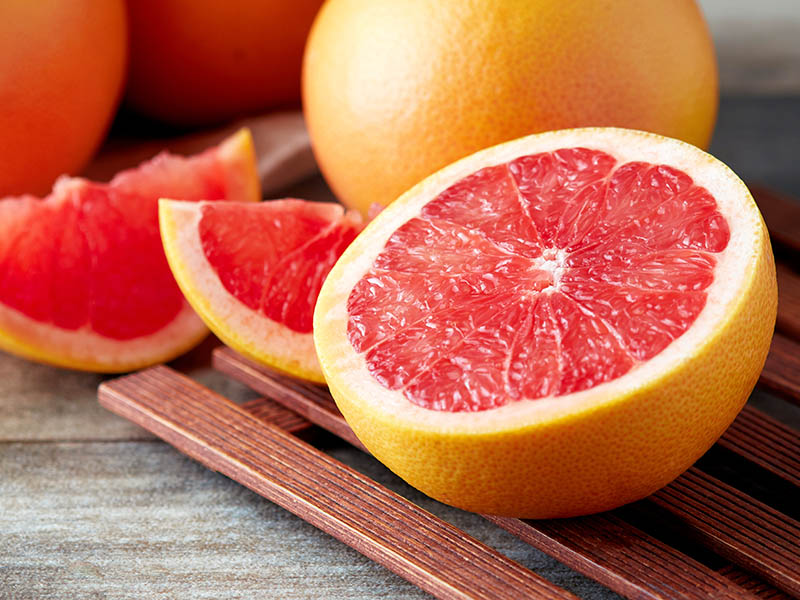
Grapefruit is another hybrid citrus with a combination of Sweet Orange and Pomelo. The flesh of grapefruit varies in different variations, but it mostly dives in pink, red, or creamy white.
This fruit beginning with “G” tastes slightly sweet and a bit bitter. People often grow grapefruit for the juice.
Do you know how to cut grapefruit? Here’s basically how with different methods!
18. Ugly Fruit (Jamaican Tangelo)
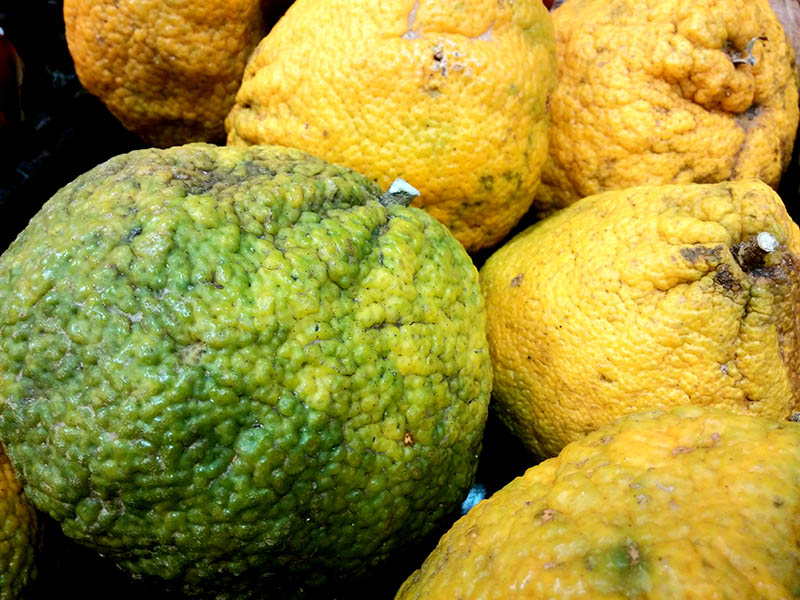
This type of fruit may look “ugly”, as the name, with bumpy and wrinkly skin. However, its flesh is pulpy and really delicious! It originates from the Jamaican islands. It is another example of the saying, “Don’t judge a book by its cover!”
Ugly Fruit is a cross of tangerine – orange – grapefruit. It has the sweetness of tangerine, fragrant zest that can be a great replacement for the orange rind.This fruit also tastes less bitter than grapefruit.
19. Bitter Orange
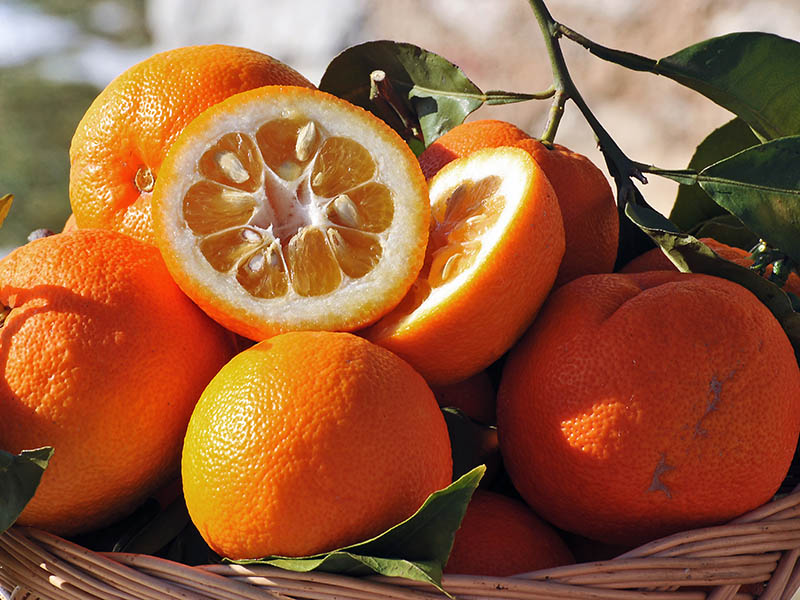
As its name suggests, this is one of the most bitter orange types or even citrus fruits! It also includes a bright orange color. It originates from Southeast Asia and is used a lot in Turkish cuisine.
Did you know that the world-famous marmalade of Britain used Bitter Orange? People also use it a lot in Turkish cuisine, and for its bitterness, it is considered an assistant in the weight loss process because it may stop your appetite.
20. Etrog
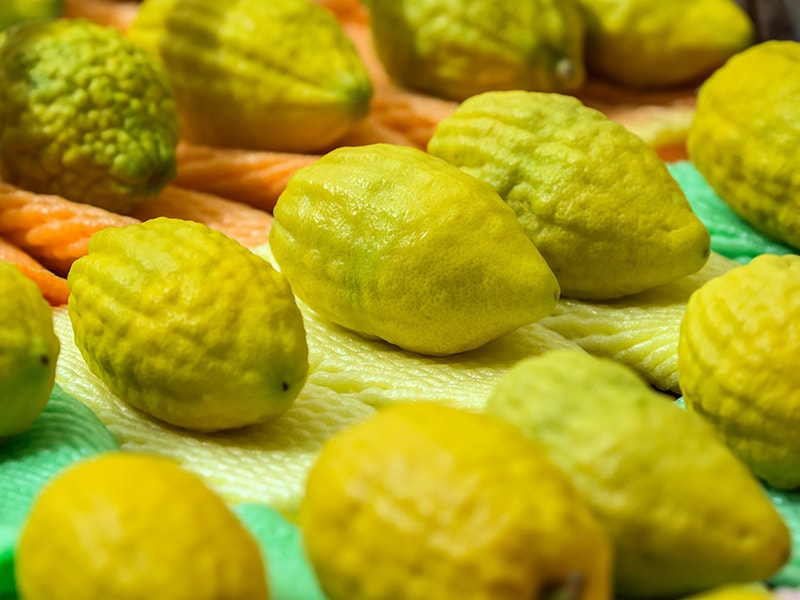
Etrog has an oblong shape and thick bumpy rind. Its flavor is neither sweet nor sour but in between with a hint of violets. Its pulp tastes very tart and has a lot of seeds.
Etrog presents the heart in the Four Species used in Sukkot. Etrog will be wrapped in silky fiber and put in a silver box for protection during the holidays. After those days, women will eat this fruit as a wish to get easy childbirth.
There is an Ashkenazi custom that people will save the Etrog until another holiday called Tu BiShvat and pray for a more beautiful Etrog for the next Sukkot. Some people really like to make liquor, jam or a pomander from Etrog with a special process!
21. Blood Orange
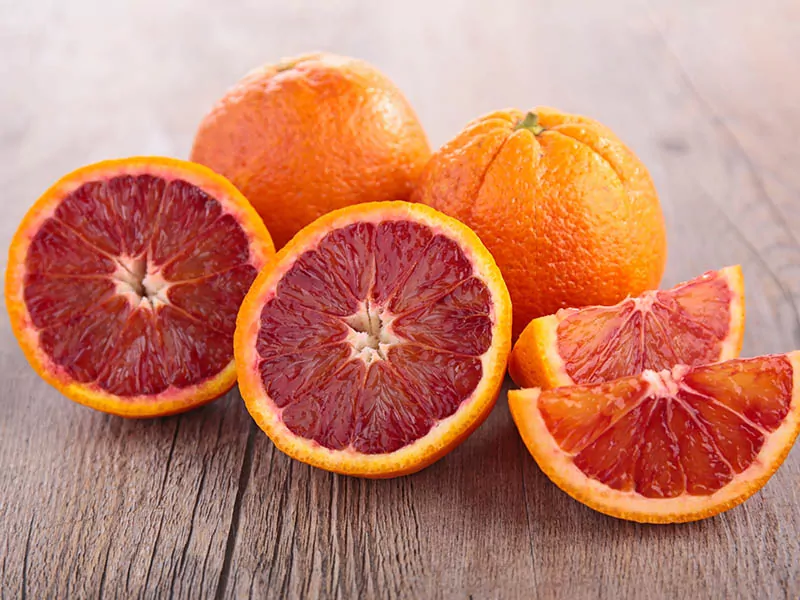
Blood Orange flesh is much darker than other types of orange. It has a dark blood red shade inside that looks like it’s bleeding! It consists of thick, pitted skin, and the size seems to be smaller than the ordinary orange.
Blood Orange is actually the mutation of ordinary orange and consists of a unique flavor that is somehow like raspberry. It also has a common citrusy, tart, and sweet taste of any citrus fruit; therefore, people often use Blood Orange to make marmalade or salads.
In Italy, there’s a famous salad called Sicilian Winter Salad that includes Blood Orange slices, bulb fennel slices, and some olive oil. This orange is also a popular ingredient in Italian soda, sorbet, and gelato.
22. Key Lime
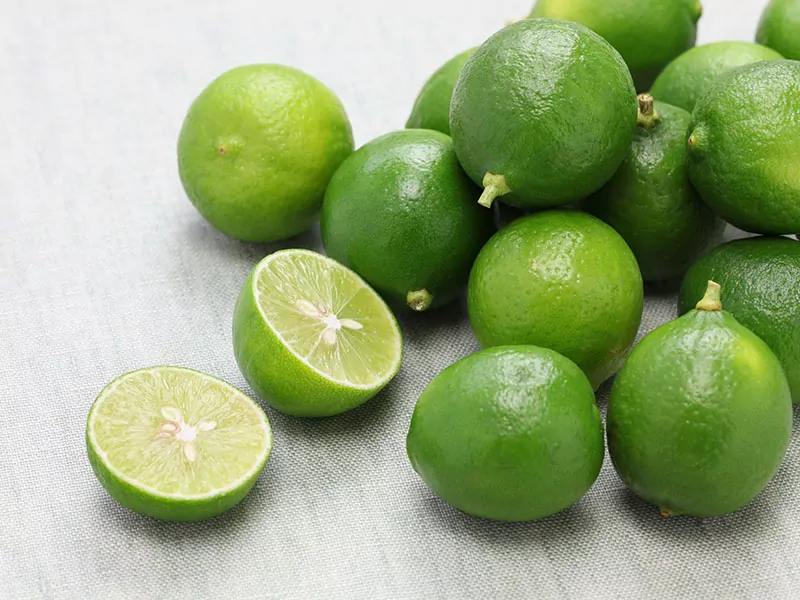
Key Lime is small, round with smooth skin in light yellow-green, and completely yellowish when ripe. It is the closest version of the original Lime. It has a high acidic content and an intense aroma. It is best known to use in making Key Lime pie.
23. Rangpur Lime
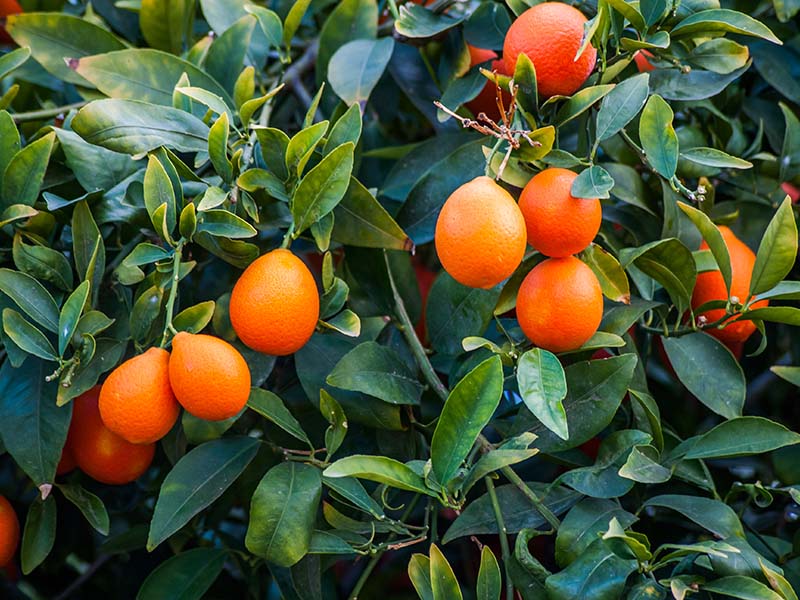
Rangpur Lime is named after a city in Bangladesh, where it is found the most. It is a hybridization of Mandarin orange and lemon. Unlike many other types of limes, Rangpur Lime dives in bright orange from outside to inside.
You can use Rangpur Lime juice to replace lime juice in a recipe. It also tastes acidic like standard lime, but it has a muskier, smokier citrus taste that may add a touch of smoky flavor to cocktails and beverages.
Here’s an ultimate explanation about Rangpur Lime for you!
24. Finger Lime
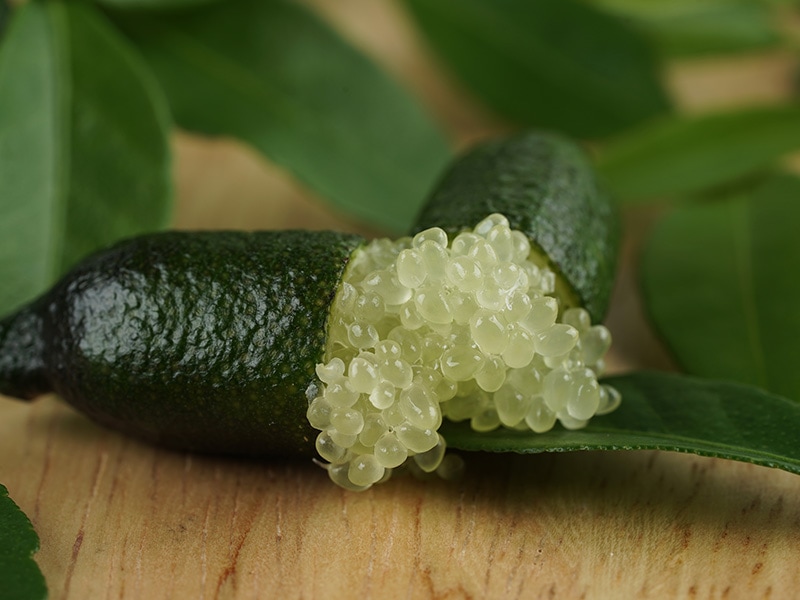
Finger Lime looks so special because it is the size of a thumb! If you cut a Finger Lime in half, you will see the tiny beads inside. They taste acidic and slightly bitter. People will use Finger Lime in making marmalade and pickles. Its rind can also be used as a spice.
25. Navel Orange
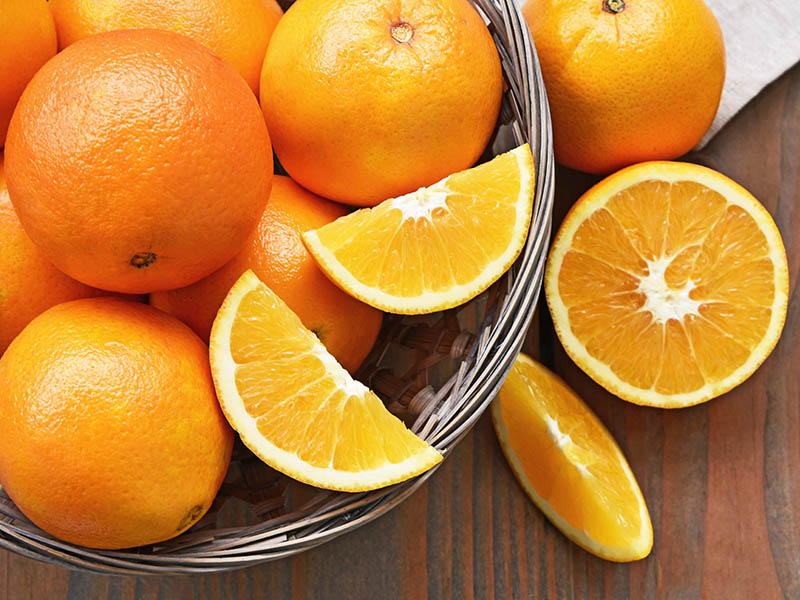
Navel Orange is a large variety of Orange having a thick and loose rind that is really easy to peel. This special fruit beginning with N contains less juicy and bitter flesh, thereby not appropriate for making juice. Navel Orange is also one of the most typical grown fruits globally.
26. Dekopon
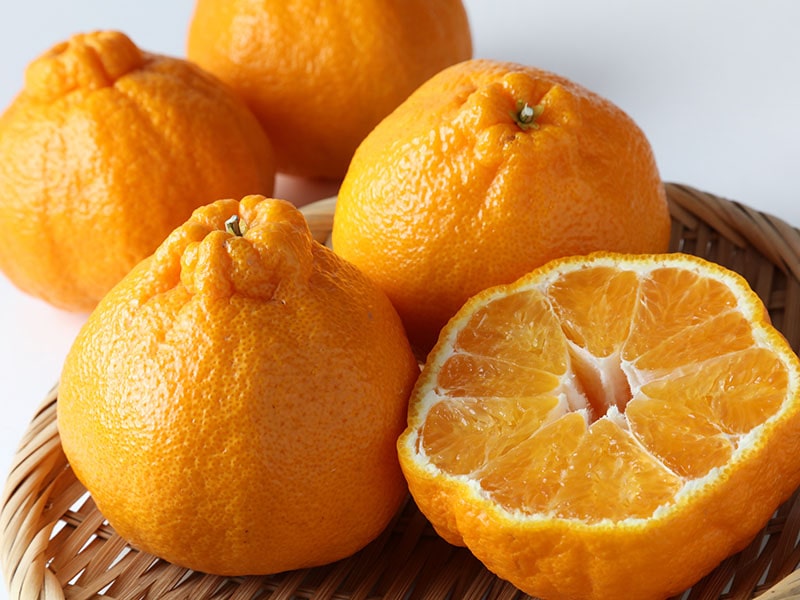
Depokon is a cross between Kiyomi and Ponkan. It also has a signature yellow-orange skin and a larger size than the standard type of orange. It tastes sweet, so sweet that people even compare it to candy. Therefore, Depokon is perfect for joining in a dessert!
27. Sudachi
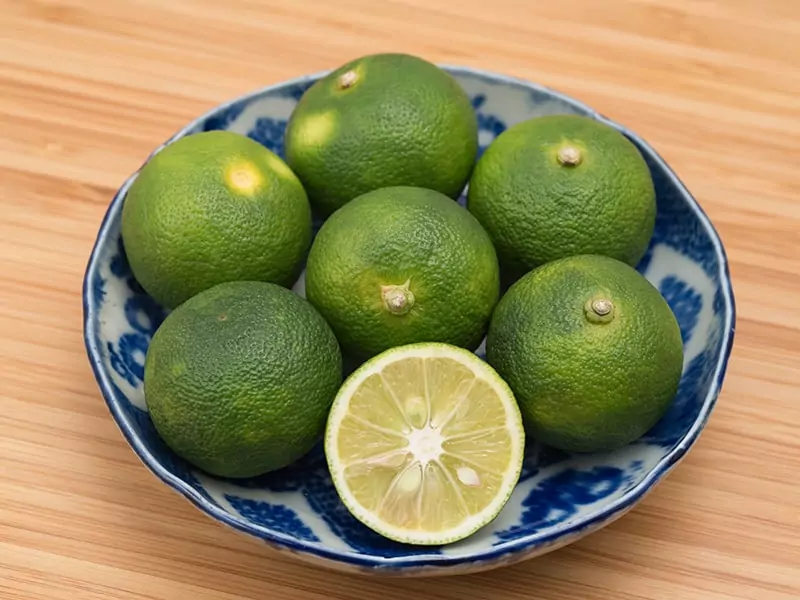
Sudachi is an acidic citrus fruit not consumed as a fruit but a food flavoring. It may be a cross between Yuzu and Koji or Tachibana orange. It is small and in round shape with shiny skin and white flesh. Its juice can be a substitute for lemon or lime juice in dishes.
28. Cara Cara Navel
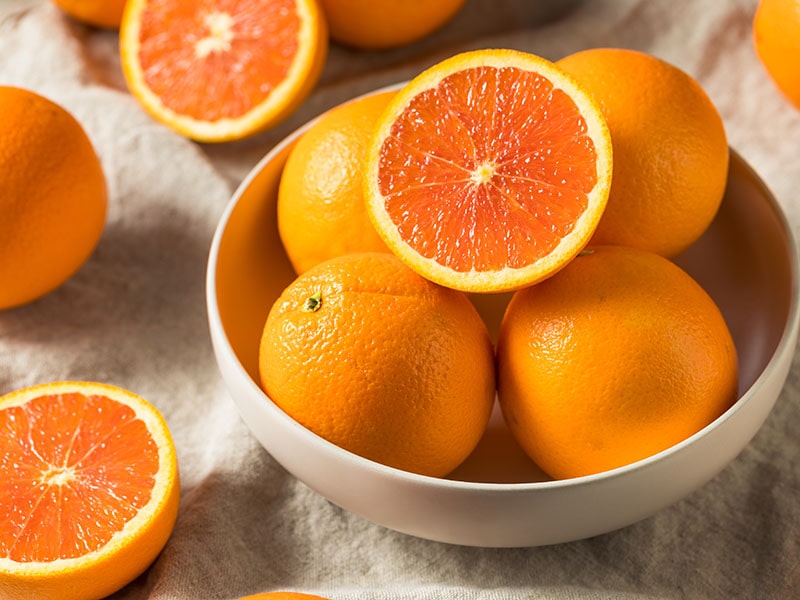
Cara Cara Navel is an Orange Navel species in Venezuela that tastes less tangy than other types of oranges. Its flesh is in dark pink and is really sweet, resembling citrusy berries with blackberry, cherry, and rose petal notes.
The pink flesh of Cara Cara Navel is really juicy and appealing!
29. Pompia
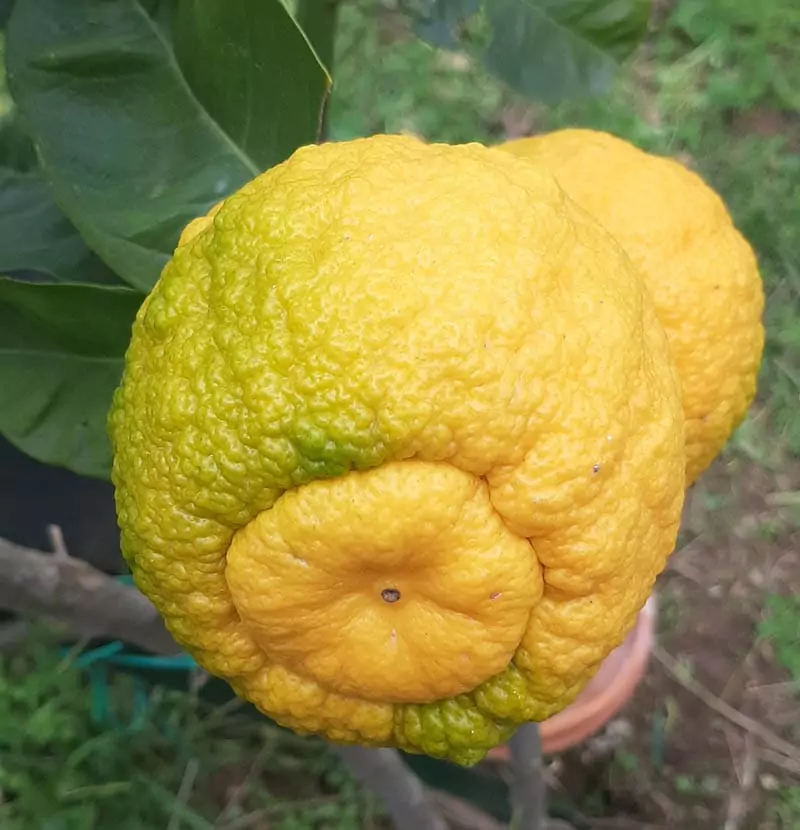
You can only find Pompia in Sardinia, especially the Eastern half. It is in a moderate size like Grapefruit with a bumpy, warty appearance and thick skin. It smells pretty mild and usually does not have seeds in its flesh.
People may use Pompia in many liquors or mix it with sour orange. Its candied rind coated with honey is also a typical ingredient of a traditional dessert of Siniscola named Sa pompia Intrea.
30. Shonan Gold
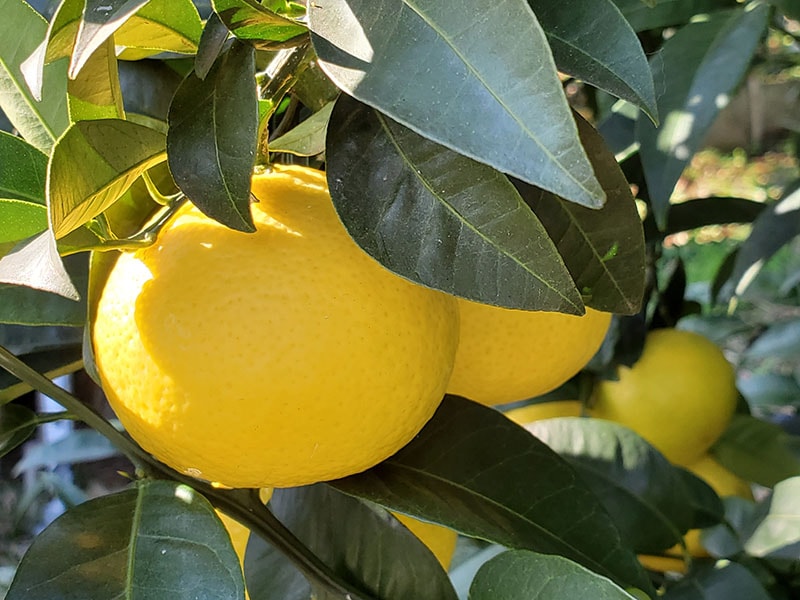
Shonan Gold is famous for its spectacular golden bright yellow. It has a spherical shape with smooth skin. The skin is loose so that you can easily peel it by hand. Its flesh or pulp is sweet, succulent, and tender and almost has no seed inside.
31. Shangjuan (Ichang Lemon)
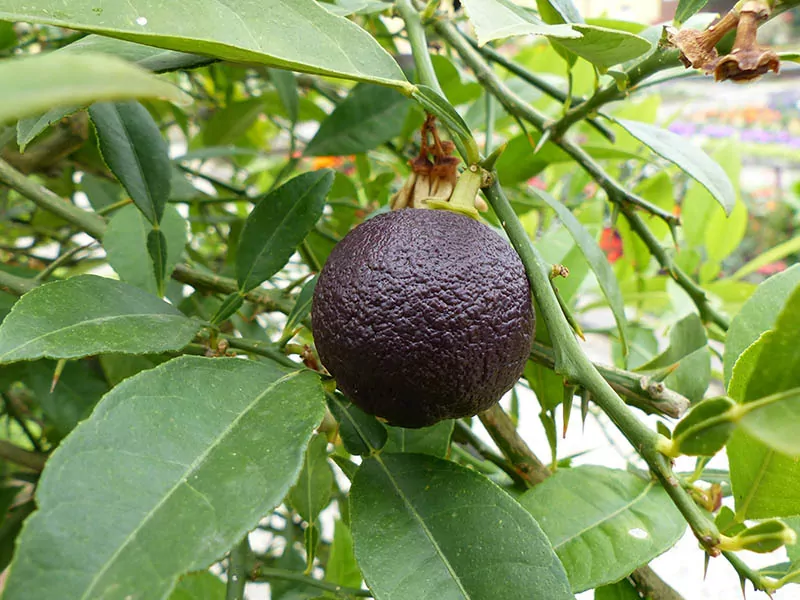
Shangjuan, or Ichang Lemon, is considered a cross of Pomelo and Ichang Papeda, resulting in its name. Its flavor thereby also resembles the taste between lemon and grapefruit. The skin of this large fruit can dive in pale yellow or green.
32. Iyokan
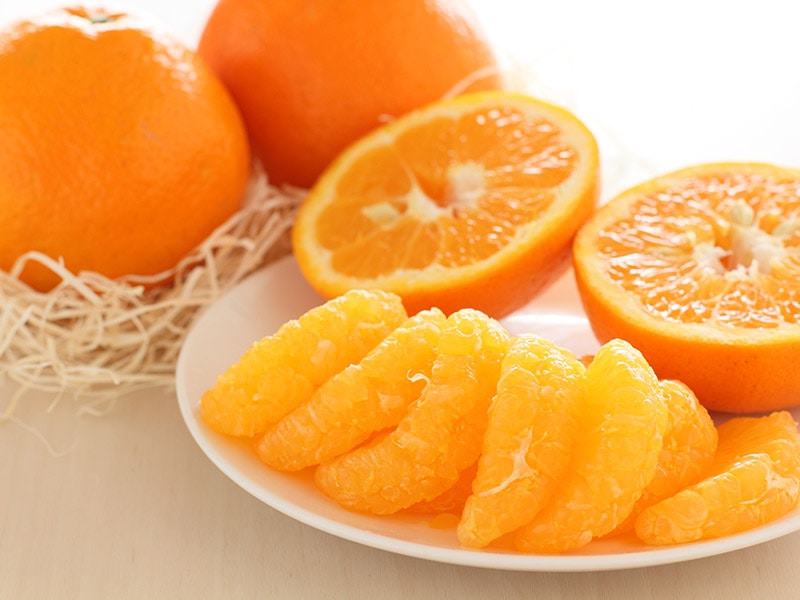
Iyokan, also called Anadomikan, is a Japanese member of the Citrus family. It is the combination of the Dancy tangerine and Kaikoukan. Its skin is very bright in color, with an orange shade. The flesh has a robust, aromatic scent and a slightly sour, bitter taste.
33. Moroccan Citron
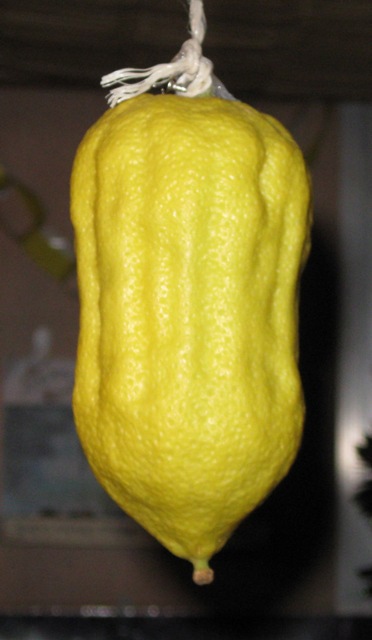
Moroccan Citron is a variety of sweet Citron native to Assads, Morocco. It has a low acid content in an oblong shape. Its flesh is rather dry and tastes sour and fruity like most citrus fruits.
The native Jewish use Moroccan Citron as Etrog, a festive fruit in Sukkot. After the Second Temple was knocked down, the Jewish were exiled to Morocco, and they brought this fruit along with them.
34. Koji Orange
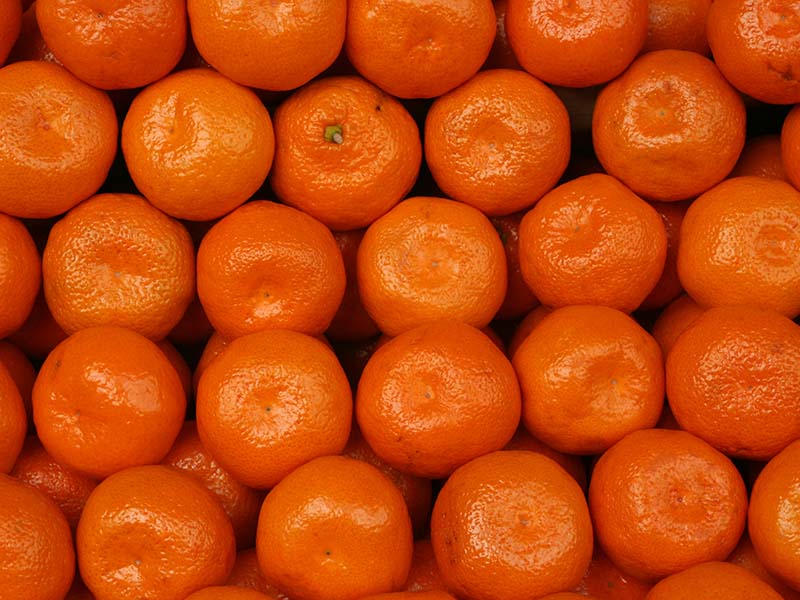
Koji Orange is another Orange variety that is native to Japan. It has an oblate shape with a bright orange shade. It is tiny and has a lot of seeds in its flesh; therefore, it is not commonly grown for widespread commercial use.
Which One Is Your Favorite Citrus Fruit?
How many types of citrus fruits from this list have you already known about? I’m sure there are a lot since most of them are widely known by people from all over the world! Comment below you have an interesting story or something more about these unique fruits!
I hope that you have had a fun time reading this post! If you find this article helpful, don’t forget to like, share and subscribe to get more exciting news and information! See you later, my friend!
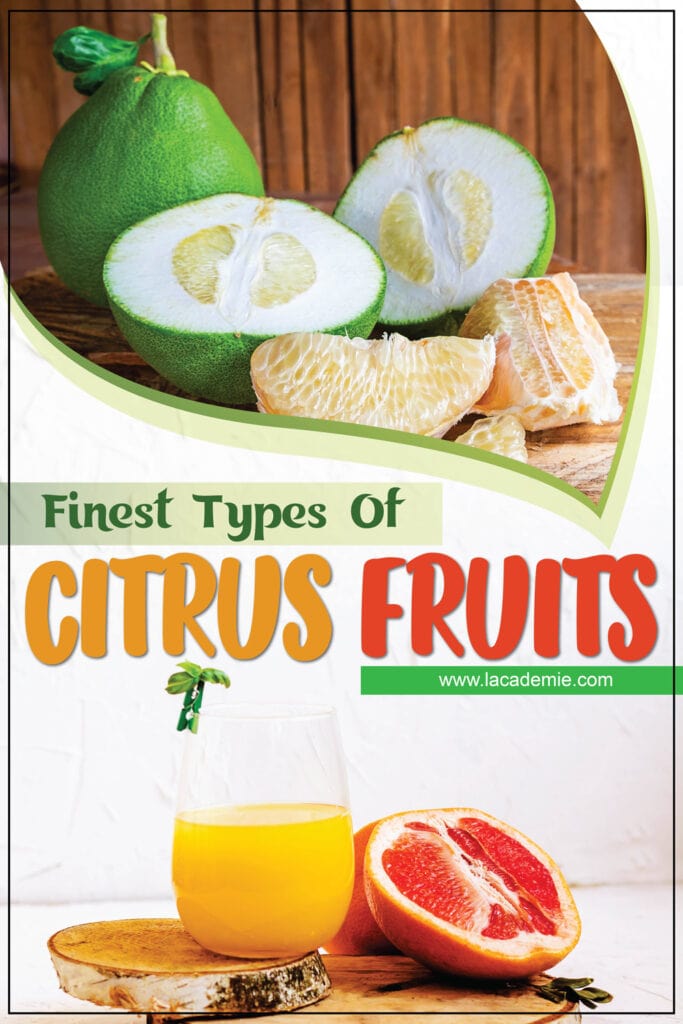


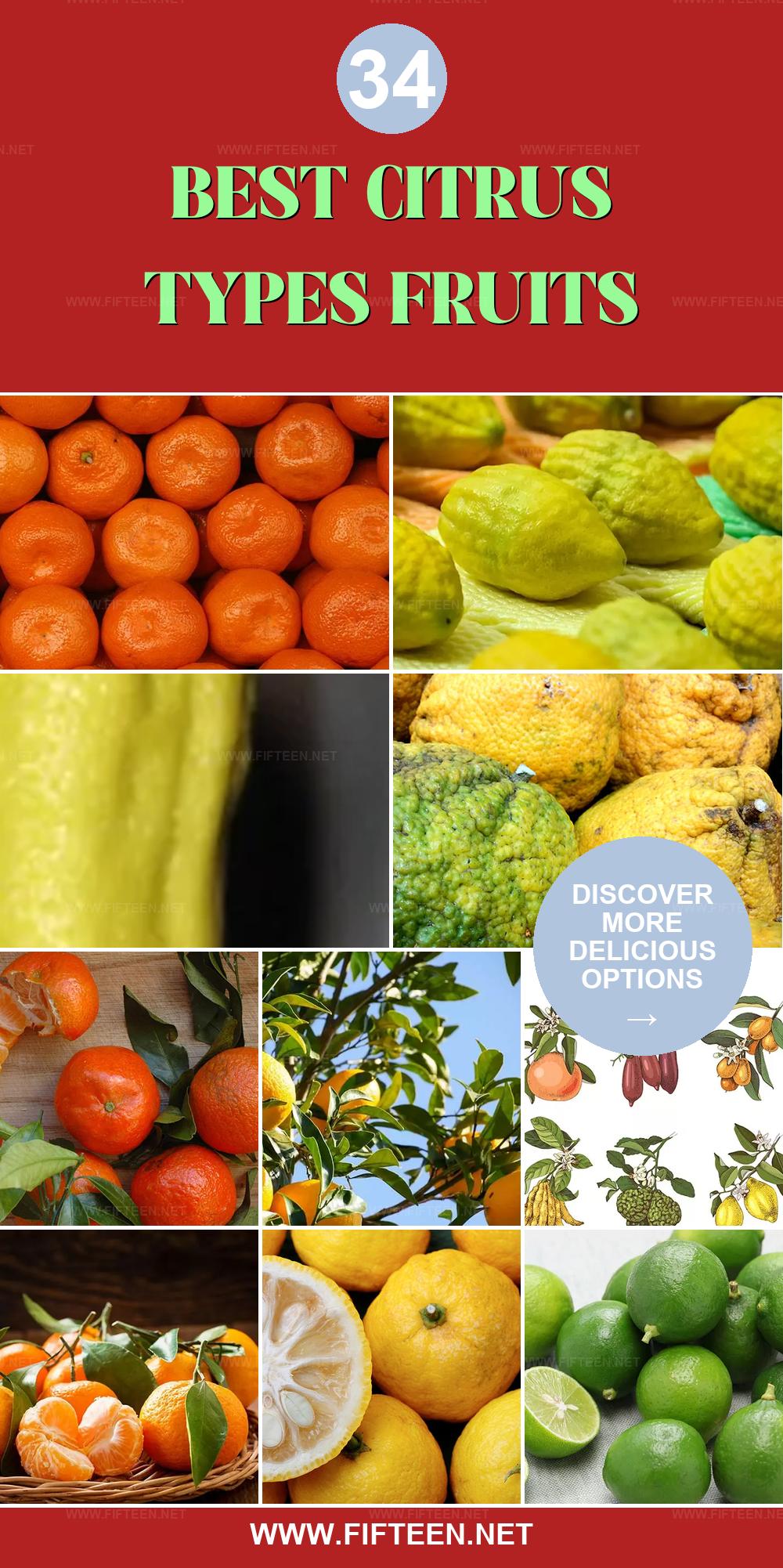
Jamie Scott
Editor in Chief, Senior Content Writer
Expertise
Home Cooking, Meal Planning, Recipe Development, Baking and Pastry, Food Editor, Cooking-video Maker, Western Food Evaluation Expert
Education
Le Cordon Bleu College of Culinary Arts
Local Community College, New York, NY
Jamie Scott is a skilled culinary expert and content creator specializing in Western cuisine. With over 15 years in the culinary field and formal training from Le Cordon Bleu, Paris, Jamie deeply understands how to blend nutrition with delicious flavors. His passion for cooking matches his commitment to making healthy eating accessible and enjoyable.
On Fifteen.net, Jamie brings a fresh perspective to classic dishes and beverages, offering readers insightful recipes, cooking tips, and a fresh view on meal planning that emphasizes taste, health, and simplicity.